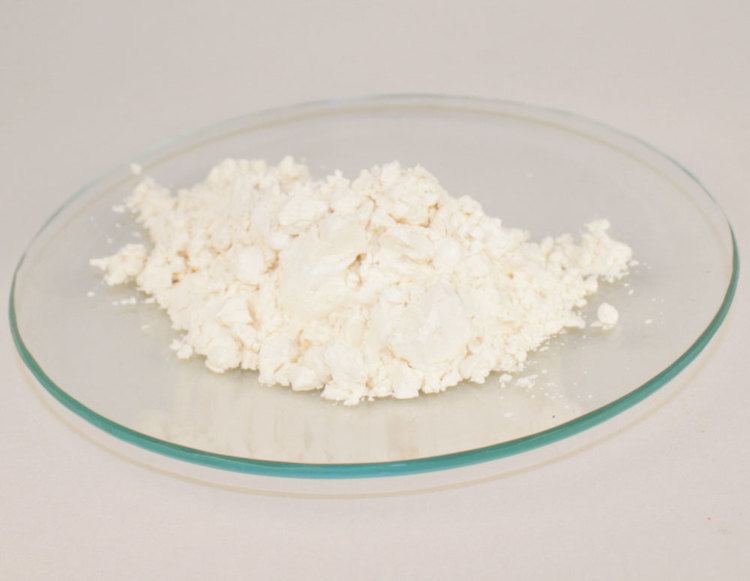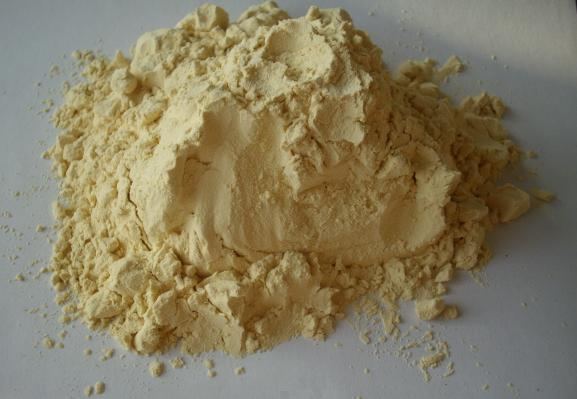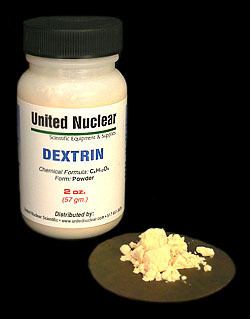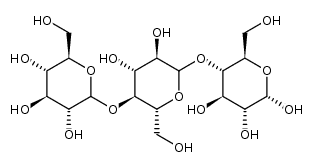Formula (C6H10O5)n | ||
 | ||
Dextrins are a group of low-molecular-weight carbohydrates produced by the hydrolysis of starch or glycogen. Dextrins are mixtures of polymers of D-glucose units linked by α-(1→4) or α-(1→6) glycosidic bonds.
Contents

Dextrins can be produced from starch using enzymes like amylases, as during digestion in the human body and during malting and mashing, or by applying dry heat under acidic conditions (pyrolysis or roasting). The latter process is used industrially, and also occurs on the surface of bread during the baking process, contributing to flavor, color, and crispness. Dextrins produced by heat are also known as pyrodextrins. During roasting under acid condition the starch hydrolyses and short chained starch parts partially rebranch with α-(1,6) bonds to the degraded starch molecule. See also Maillard Reaction.

Dextrins are white, yellow, or brown powders that are partially or fully water-soluble, yielding optically active solutions of low viscosity. Most of them can be detected with iodine solution, giving a red coloration; one distinguishes erythrodextrin (dextrin that colours red) and achrodextrin (giving no colour).

White and yellow dextrins from starch roasted with little or no acid are called British gum.
What will happen if you burn dextrin
Uses

Yellow dextrins are used as water-soluble glues in remoistable envelope adhesives and paper tubes, in the mining industry as additives in froth flotation, in the foundry industry as green strength additives in sand casting, as printing thickener for batik resist dyeing, and as binders in gouache paint and also in the leather industry.
White dextrins are used as:
Due to the rebranching, dextrins are less digestible; indigestible dextrin are developed as soluble stand alone fiber supplements and for adding to processed food products.
Other types
Maltodextrin is a short-chain starch sugar used as a food additive. It is produced also by enzymatic hydrolysis from gelled starch and is usually found as a creamy-white hygroscopic spray dried powder. Maltodextrin is easily digestible, being absorbed as rapidly as glucose, and might either be moderately sweet or have hardly any flavor at all.
The cyclical dextrins are known as cyclodextrins. They are formed by enzymatic degradation of starch by certain bacteria, for example, Paenibacillus macerans (Bacillus macerans). Cyclodextrins have toroidal structures formed by 6-8 glucose residues.
